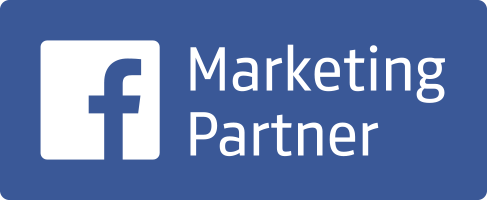
The SaaS landscape is evolving rapidly, and if you want to stay ahead in 2024, having a SaaS marketing plan is more important than ever. Whether you’re a startup or a seasoned player in the industry, a well-structured plan helps ensure your marketing team aligns your marketing efforts with your business goals.
In this guide, we’ll walk you through the step-by-step guide to creating a SaaS marketing plan template to help you grow, engage, and retain your customer base. Let’s dive in and build a marketing plan that works for your SaaS business!
Why Every SaaS Business Needs a Marketing Plan in 2024
SaaS companies face stiff competition in 2024, with more businesses offering software as a service solution than ever. To stand out, you need to create a robust marketing strategy that attracts leads, converts them into paying customers, and keeps them engaged for the long haul. Here’s why a SaaS marketing plan is crucial:
- Stay Competitive: A structured SaaS marketing strategy helps you define and strengthen your product positioning in an increasingly saturated SaaS industry.
- Maximize Efficiency: A marketing plan outlines clear objectives and ensures your marketing team is aligned on goals and timelines.
- Measure Success: Key metrics for SaaS marketing allow you to track your performance and continuously optimize your approach.
- Drive Growth: An effective SaaS growth plan focuses on customer acquisition, lead nurturing, and retention strategies while keeping an eye on profitability.
The bottom line?
With a marketing plan, you can save time and resources while taking advantage of opportunities to grow your business.
Components of a SaaS Marketing Plan Template
A solid SaaS marketing plan is broken down into critical sections, each serving a unique purpose in driving growth and customer acquisition. Let’s explore each component in detail:
1. Executive Summary
Provide an overview of your SaaS company, your unique value proposition (UVP), and the key objectives of your marketing plan. Think of this as the “why” behind your strategy.
2. Market Research
Conduct comprehensive research on your target audience, industry trends, and competitors. A strong competitive analysis allows you to identify gaps in the current market that your software can fill.
3. Positioning and Messaging
How is your product unique? Your SaaS product positioning should highlight your strengths and the specific pain points your product solves for customers. Develop a clear brand message that engages your audience.
4. Marketing Objectives and KPIs
Define your SaaS marketing goals. Use SMART goals (specific, measurable, achievable, relevant, and time-bound) to track key performance indicators such as:
- Website traffic growth
- Lead generation numbers
- Conversion optimization
- Customer retention rates
5. Buyer Personas
Create a collection of detailed buyer personas that represent your target customers. Include their pain points, goals, and buying behaviors. Doing this helps tailor your marketing efforts to meet their needs.
6. Marketing Channels and Tactics
Determine which marketing channels will yield the best results:
- SEO for SaaS: Drive organic traffic through optimized blog posts and landing pages.
- Content marketing for SaaS: Engage potential customers with educational content like case studies, blogs, and webinars. To drive effective results, it’s important to work with experts in digital marketing for SaaS who understand the unique challenges and opportunities.
- Paid advertising for SaaS: Leverage PPC ads, social media ads, and Google Display Network to reach a wider audience.
- Email marketing and automation: Use personalized email campaigns to nurture leads and retain existing customers.
7. Content Strategy
A content strategy is crucial for lead generation. Plan your content around buyer personas, keyword research, and the stages of your SaaS sales funnel. Well-written content builds trust and authority in your niche.
8. Budget Allocation
Allocate your marketing budget across the most effective channels. For instance, if paid ads are performing better than organic search, consider adjusting your spending accordingly. Ensure your budget is flexible for experimentation.
9. Timeline and Execution
Lay out a clear timeline with milestones for each of your marketing initiatives. This will help you track progress and keep the team focused on deliverables.
10. Analysis and Optimization
A successful SaaS marketing strategy doesn’t end with execution. Continuously measure your results using metrics such as:
- Lead-to-customer conversion rate
- ROI on marketing campaigns
- Customer lifetime value (CLV)
- Reducing churn rates
Use this data to optimize your campaigns and refine your marketing plan over time.
Step-by-Step Guide to Creating Your SaaS Marketing Plan
Ready to create your own marketing plan? Follow these steps:
Step 1: Define Your Marketing Objectives
What are your key goals for 2024? Are you looking to increase revenue growth, acquire new users, or improve customer retention? Defining these goals will guide your overall marketing strategy.
Step 2: Conduct Market Research
Understanding your competitors is critical. Conduct a detailed competitor analysis to identify their strengths and weaknesses. What’s their go-to-market strategy? How are they positioning themselves in the SaaS industry? Analyze gaps in the market to identify opportunities for growth.
Step 3: Build Buyer Personas
Create a list of detailed buyer personas based on customer demographics, behavior, and pain points. This will help you focus your content and messaging on what resonates most with your audience.
Step 4: Choose Your Marketing Channels
Which marketing channels will you focus on? Select the marketing channels that suit your business goals and target audience. Inbound marketing for SaaS, including SEO and content, often yields high returns. Paid advertising can amplify your efforts by driving targeted traffic quickly.
Step 5: Develop a Content Marketing Strategy
Your content marketing strategy should focus on providing value to your audience. Plan out your content calendar, including blog posts, videos, webinars, and other resources that help build trust and authority in your industry. Ensure your web content aligns with SEO best practices and addresses key pain points identified in your buyer personas.
Step 6: Set a Budget and Resources
Budgeting is a key part of any marketing plan. How will you distribute your marketing spend? Allocate resources for paid advertising campaigns, content distribution, and marketing automation. Prioritize the channels that offer the highest ROI, but leave room in your budget for testing new strategies. Ensure you have the right tools and team in place to execute your plan.
Step 7: Build a Timeline for Execution
Set realistic deadlines for each stage of your marketing plan. Whether it’s content creation, ad campaigns, or lead nurturing efforts, having a timeline ensures that your team stays on track.
Step 8: Monitor Performance and Optimize
Tracking your KPIs is crucial. Analyze the results of your campaigns and optimize based on performance. Growth hacking techniques can help you scale quickly while keeping costs down. If something isn’t working, don’t be afraid to pivot and optimize your strategy to maximize your ROI.
Common Mistakes to Avoid When Creating a SaaS Marketing Plan
Even with the best-laid plans, it’s easy to fall into common pitfalls. Here are some mistakes to watch out for:
Over-Reliance on One Marketing Channel
Relying too heavily on a single channel, such as paid ads or SEO, can limit your reach and leave you vulnerable if that channel underperforms. To mitigate this risk, diversify your approach by incorporating multiple marketing channels to ensure a steady flow of leads.
Inconsistency in Branding and Messaging
Maintaining consistency in your marketing strategy is essential. Ensure that your branding, messaging, and content remain aligned with your overall business goals for a unified and coherent approach that resonates with your target audience.
Tips for Optimizing Your SaaS Marketing Plan
- Focus on Personalization: Tailor your marketing messages to specific audience segments.
- Repurpose Content: Use one piece of content across multiple channels to increase reach.
- A/B Test Campaigns: Experiment with different headlines, CTAs, and formats to improve conversion rates.
- Automate Where Possible: Use marketing automation tools to nurture leads efficiently.
Take the Next Step: Build Your SaaS Marketing Plan for 2024
Building a successful SaaS marketing plan in 2024 requires a well-defined strategy, clear goals, and consistent execution. Following a structured approach, you can streamline the process, stay focused on what matters most, and ensure your business is set up for growth.
Need help developing your plan? Work with specialists in digital marketing for SaaS to ensure your strategy is optimized for growth and long-term success. Schedule a free consultation with Build Media Group today.



